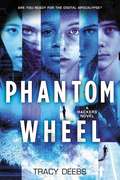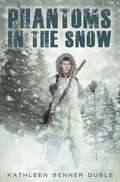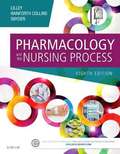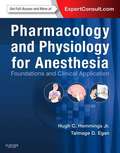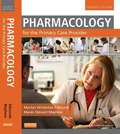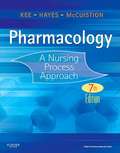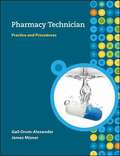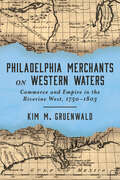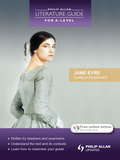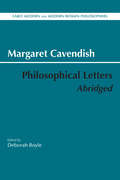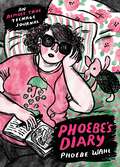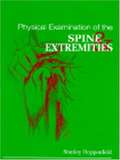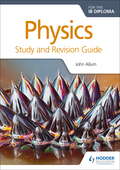- Table View
- List View
Phaenomena (Johns Hopkins New Translations from Antiquity)
by AratusAfter the Iliad and the Odyssey, the Phaenomena was the most widely read poem in the ancient world. Its fame was immediate. It was translated into Latin by Ovid and Cicero and quoted by St. Paul in the New Testament, and it was one of the few Greek poems translated into Arabic. Aratus’ Phaenomena is a didactic poem—a practical manual in verse that teaches the reader to identify constellations and predict weather. The poem also explains the relationship between celestial phenomena and such human affairs as agriculture and navigation. Despite the historical and pedagogical importance of the poem, no English edition suitable for students and general readers has been available for decades. Aaron Poochigian’s lively translation makes accessible one of the most influential poets of antiquity. Poochigian's interpretation of the Phaenomena reestablishes the ancient link between poetry and science and demonstrates that verse is an effective medium for instruction. Featuring references to Classical mythology and science, star charts of the northern and southern skies, extensive notes, and an introduction to the work’s stylistic features and literary reception, this dynamic work will appeal to students of Ancient Greece who want to deepen their understanding of the Classical world.
Phantom Menace or Looming Danger?: A New Framework for Assessing Bioweapons Threats
by Kathleen M. VogelCalls for a new way to assess bioweapon threats—recognizing the importance of the sociopolitical context of technological threats.The horrifying terrorist attacks on September 11, 2001, and the anthrax strikes that soon followed gave the United States new reason to fear unconventional enemies and atypical weapons. These fears have prompted extensive research, study, and planning within the U.S. military, intelligence, and policy communities regarding potential attacks involving biological weapons. In Phantom Menace or Looming Danger?, Kathleen M. Vogel argues for a major shift in how analysts assess bioweapons threats. She calls for an increased focus on the social and political context in which technological threats are developed.Vogel uses case studies to illustrate her theory: Soviet anthrax weapons development, the Iraqi mobile bioweapons labs, and two synthetic genomic experiments. She concludes with recommendations for analysts and policymakers to integrate sociopolitical analysis with data analysis, thereby making U.S. bioweapon assessments more accurate. Students of security policy will find her innovative framework appealing, her writing style accessible, and the many illustrations helpful. These features also make Phantom Menace or Looming Danger? a must-read for government policymakers and intelligence experts.
Phantom Wheel: A Hackers Novel
by Tracy DeebsThe digital apocalypse has arrived and the future is here in this addictive technological thriller full of twists and turns. Perfect for fans of Nerve! Being recruited by the CIA to join a top-secret intelligence program should be the opportunity of a lifetime. For Issa, it's a shot at creating a new and better life for herself and her siblings. For clever con artist Harper, it's a chance to bury the secrets of her troubled past and make sure that those secrets stay buried. But for Owen--honor student, star quarterback, and computer-hacking genius--it sounds like a trap. He's right. Owen discovers that instead of auditioning for the CIA, they've all been tricked by a multibillion-dollar tech company into creating the ultimate computer virus. It's called Phantom Wheel, and it's capable of hacking anyone on Earth, anywhere, at any time. And thanks to six teenagers, it's virtually unstoppable. Horrified by what they've done, the hackers must team up to stop the virus before the world descends into chaos. But working together is easier said than done, especially as the lines start to blur between teammate, friend, and more than friend. Because how do you learn to trust someone when you've spent your entire life exploiting that same trust in others?
Phantoms in the Snow
by Kathleen Benner DubleIn this gripping journey, a fifteen-year-old pacifist must decide what he believes as he faces the reality of World War II.The year is 1944, and fifteen-year-old Noah Garrett's parents have died from smallpox. Without any other family nearby, Noah is sent to live with his uncle, whom he has never met, in Camp Hale, Colorado. There is one small problem with this decision: Noah has been raised a pacifist, and Camp Hale is a U.S. military base for a little-known division of winter warfare soldiers called Phantoms. Can a boy who's never seen snow and doesn't believe in war survive among these soldiers?Noah's struggle to resolve his upbringing with the horrors of World War II into a way of life he can believe in takes him on an incredible and riveting journey from the training camp to the frontlines of battle. Based on historical events, the story of Noah and the Phantoms of the Tenth Mountain Division is one of courage and conviction, brotherhood, and the joy in living.
Pharmacology And The Nursing Process
by Linda Lane Lilley Shelly Rainforth Collins Julie S. SnyderLet this outstanding pharmacology text help you learn how to administer drugs safely and effectively! Now in its eighth edition, Pharmacology and the Nursing Process continues to deliver the perfect amount of pharmacology, prioritization, and nursing process information to today''s nursing students. Centering on its unique key drug approach, this text focuses only on the drug information you need to safely administer drugs. The text also continues to emphasize the nursing process and prioritization, covering the most essential assessments, nursing diagnoses, interventions, and evaluations you need to practice effectively. New to this edition is even more coverage of QSEN competencies, simpler language, and a wealth of reader-friendly features and innovative learning aids. Along with its integrated NCLEX preparation and insightful learning strategies, you won''t find a more complete pharmacology text on the market!
Pharmacology and Physiology for Anesthesia
by Hugh C. Hemmings Talmage D. EganBetter understand the complexities of pharmacology and physiology relevant to your practice with the brand-new medical reference book, Pharmacology and Physiology for Anesthesia. Drs. Hugh Hemmings and Talmage Egan provide the clinical insights you need to effectively administer anesthesia, ensuring patient safety and the most optimal outcomes. Access comprehensive, continually updated research on the physiology of organ systems and clinical topics in the pharmacology of anesthetic drugs. Quickly and easily reference the information you need through user-friendly tables, figures, and algorithms, all presented in lavish full color throughout. Understand the molecular mechanism of drug actions and identify key drug interactions that may complicate anesthesia with dedicated sections on these key areas. Search the text and download images online at Expert Consult. Build a thorough knowledge of pharmacology and physiology focused on clinical practice
Pharmacology for Nurses: A Pathophysiologic Approach (3rd Edition)
by Michael Patrick Adams Leland Norman Holland Jr. Carol Q. UrbanThe third edition of Pharmacology for Nurses: A Pathophysiologic Approach has been thoroughly updated to reflect current pharmacologic drugs and processes. This book is structured to present pharmacology and pathology together, so students can more easily grasp the interrelationship between these subjects and patient care.
Pharmacology for the Primary Care Provider, Fourth Edition
by Marilyn Winterton Edmunds Maren Stewart Mayhew Stephen M. SetterWritten by and for nurse practitioners, and also suitable for physician's assistants, this edition focuses on what you need to know to safely and effectively prescribe drugs for primary care.
Pharmacology: A Nursing Process Approach (7th Edition)
by Joyce Lefever Kee Evelyn R. Hayes Linda E. MccuistionFeaturing concise, straightforward coverage, Pharmacology: A Nursing Process Approach, 7th Edition puts nursing pharmacology concepts and essential drug calculation skills into a practical nursing context to prepare you for real-world drug administration responsibilities. This edition has been revised and updated with the most current nursing pharmacology information available. Innovative features such as Prototype Drug Charts, Nursing Process Summaries, an extensive math/dosage calculation section, and NCLEX Examination-style study questions make nursing pharmacology more understandable than ever. Unique! Prototype Drug Charts provide easy access to key information on dosages, contraindications, drug-lab-food interactions, pharmacokinetics, and more for more than 100 drugs. Unique! An extensive, color-coded dosage calculation section covers six methods of dosage calculation - basic formula, ratio and proportion, fractional equation, dimensional analysis, and dosing by body weight and body surface area - eliminating the need for a separate dosage calculation book. Nursing Process Summaries present client care and drug therapy within the framework of each step of the nursing process, including information on client teaching and cultural and herbal considerations. Preventing Medication Errors boxes reinforce concepts introduced in the medication safety chapter and highlight common errors that occur in clinical practice to help you ensure safe drug administration. Herbal Alerts provide a quick reference to side effects, drug interactions, and additional information for popular herbs you may encounter in practice. A fully updated bioterrorism appendix helps you recognize the clinical manifestations of bioterrorism weapons and respond with appropriate nursing care. Unique! Illustrated overviews of normal anatomy and physiology in all drug therapy chapters help you understand how drugs work in various body systems. Critical Thinking Case Studies at the end of each chapter challenge you to apply your knowledge and analytical skills to realistic client scenarios. NCLEX Study Questions for each chapter help prepare you for the growing pharmacology coverage on the NCLEX Examination. Answers are listed upside-down at the bottom of the page for quick feedback. New medication safety chapter discusses medication errors, specific nursing measures to prevent medication errors, possible consequences of medication errors to nurses, responses to errors, reporting and learning from mistakes, and related ethical issues. Enhanced NCLEX Examination-style study questions are now more application-based and include at least one alternate-item format question per chapter. Updated chapters on cultural considerations and women's health bring you the latest information on these important considerations in drug therapy. More reader-friendly and understandable than ever, this edition features helpful new photos throughout.
Pharmacy Technician: Practice and Procedures
by Gail Orum-Alexander James J. MiznerThe book is intended for entry-level students as well as seasoned learners who want to prepare themselves for the pharmacy technician profession.
Pharmacy: An Introduction to the Profession
by L. Michael PoseyAs editorial director of the APA, Posey updates his 2003 textbook introducing not the technical aspects of pharmacy, but the nature of the profession itself. It supplies core knowledge needed to put information from other courses into perspective, and is best supplements with lectures from pharmacy faculty or administrators. Revisions are based on student and instructor feedback, as well as changes in the profession and recent publications. American Pharmacists Association books are distributed by McGraw-Hill. Annotation ©2009 Book News, Inc., Portland, OR (booknews.com)
Philadelphia Merchants on Western Waters: Commerce and Empire in the Riverine West, 1750–1803
by Kim M. GruenwaldHow Philadelphia merchants forged trade networks that fueled America's westward expansion.Why did the Midwest become part of the United States instead of remaining under English, Spanish, or Native control? In Philadelphia Merchants on Western Waters, historian Kim M. Gruenwald reveals commerce and trade, rather than war and political conflict, as the driving force behind America's westward expansion. Through meticulous research into business records, Gruenwald brings to life the daring ventures of Philadelphia merchant companies like Baynton, Wharton & Morgan, who sought to dominate the Illinois fur trade, and Reed & Forde, who expanded trade routes while speculating in land warrants. Their efforts laid the foundation for the Louisiana Purchase in 1803, which unified both banks of the Ohio and Mississippi Rivers under one nation and set the stage for America's continental empire. Studying international dealings with French, Spanish, and Native powers, as well as the complexities of river commerce, Gruenwald paints a vivid portrait of a transformative era between the colonial Atlantic world and America's westward push to the Pacific. Commercial expansion into what Gruenwald dubs "the Riverine West" represents a unique era in American history between the Atlantic of the colonial British Empire and the overland journeys of Americans heading across the Great Plains to California and Oregon in the nineteenth century. This book redefines our understanding of how a fledgling republic secured control of its western frontier—not through military conquest but through entrepreneurial spirit.
Philip Allan Literature Guide (for A-Level): Jane Eyre
by Nicola Onyett Anne CrowFor study or revision, these guides are the perfect accompaniment to the set text, providing invaluable background and exam advice.Philip Allan Literature Guides (for A-level) offer succinct and accessible coverage of all key aspects of the set text and are designed to challenge and develop your knowledge, encouraging you to reach your full potential.Each full colour guide:Gives you the confidence that you know your set text inside out, with insightful coverage for you to develop your understanding of context, characters, quotations, themes and styleEnsures you are fully prepared for your exams: each guide shows you how your set text will be measured against assessment objectives of the main specificationDevelops the skills you need to do well in your exams, with tasks and practice questions in the guide, and lots more completely free online, including podcasts, glossaries, sample essays and revision advice at www.philipallan.co.uk/literatureguidesonline
Philosophical Foundations of Education (9th Edition)
by Howard A. OzmanNow in its ninth edition, Philosophical Foundations of Education provides readers with comprehensive knowledge about the various schools of thought that have comprised the philosophy of education throughout history. Highly readable, this chronological text gives insight into the individuals who helped develop various philosophies of education and provides historical information about how they lived and how they learned. In addition, each chapter covers each philosophy’s aims, methods, curriculums, teaching roles, advantages, and disadvantages. Covering not only how each philosophy evolved over time but also how these philosophies influenced subsequent educational practice, this popular textbook also challenges readers to apply what they have learned in their own profession and develop their own philosophies about education, instruction, and schooling.
Philosophical Letters, Abridged (Early Modern and Modern Women Philosophers)
by Margaret Cavendish"Margaret Cavendish (1623–1673) is a fascinating figure who is getting increasing attention by historians of philosophy these days, and for good reason. . . . She&’s an interesting advocate of a vitalist tradition emphasizing the inherent activity of matter, as well as its inherent perceptive faculties. She&’s also the perfect character to open students (and their teachers) up to a different seventeenth century, and a different cast of philosophical characters. This is an ideal book to use in the classroom. The Philosophical Letters (1664) gives us Cavendish&’s view of what was interesting and important in the philosophical world at that moment, a view of philosophy as it was at the time by an engaged participant. There are few documents like it in the history of philosophy. Deborah Boyle&’s Introduction provides a very accessible summary of Cavendish&’s natural philosophy, as well as good introductions to the other figures that Cavendish discusses in the book. Boyle&’s annotations are not extensive, but they are a great help in guiding the student toward an informed reading of the texts." —Daniel Garber, Princeton University
Philosophy at the Gymnasium
by Erik KenyonPhilosophy at the Gymnasium returns Greek moral philosophy to its original context—the gyms of Athens—to understand how training for the body sparked training for the mind. The result is an engaging inroad to Greek thought that wrestles with big questions about life, happiness, and education, while providing fresh perspectives on standing scholarly debates.In Philosophy at the Gymnasium, Erik Kenyon reveals the egalitarian spirit of the ancient gym, in which clothes—and with them, social markers—are shed at the door, leaving individuals to compete based on their physical and intellectual merits alone. The work opens with Socratic dialogues set in gyms that call for reform in character education. It explores Plato's moral and political philosophy through the lens of mental and civic health. And it holds up Olympic victors as Aristotle's model for the life of happiness through training.
Philosophy of Science: A Contemporary Introduction (Third Edition)
by Alex RosenbergAny serious student attempting to better understand the nature, methods and justification of science will value Alex Rosenberg's updated and substantially revised Third Edition of Philosophy of Science: A Contemporary Introduction. Weaving together lucid explanations and clear analyses, the volume is a much-used, thematically oriented introduction to the field. New features of the Third Edition include more coverage of the history of the philosophy of science, more fully developed material on the metaphysics of causal and physical necessity, more background on the contrast between empiricism and rationalism in science, and new material on the structure of theoretical science (with expanded coverage of Newtonian and Darwinian theories and models) and the realism/antirealism controversy. Rosenberg also divides the Third Edition into fifteen chapters, aligning each chapter with a week in a standard semester-long course. Updated Discussion Questions, Glossary, Bibliography and Suggested Readings lists at the end of each chapter will make the Third Edition indispensable, either as a comprehensive stand-alone text or alongside the many wide-ranging collections of articles and book excerpts currently available. Read our interview with Alex Rosenberg, What exactly is philosophy of science - and why does it matter? here: www. routledge. com/u/alexrosenberg
Phlebotomy Worktext and Procedure Manual (Second Edition)
by Richard Robinson Robin S. WarekoisThe book provides a complete introduction to the practice of phlebotomy in all its aspects.
Phoebe's Diary
by Phoebe WahlINSTANT NATIONAL BESTSELLER! Take a peek inside Phoebe&’s Diary into a bracingly honest illustrated account of the explosive turmoil and joy of adolescence, based on the author&’s actual teenage journals. Meet Phoebe. She is cool and insecure, talented and vulnerable, sexy and awkward, driven and confused, ecstatic and tragic. Like you. And here is her diary, packed full of invaluable friends and heartbreaking crushes, spectacular playlists and vintage outfits, drama nerds and art kids, old wounds and new love. Based on her own teenage diary, Phoebe Wahl has melded truth with fiction and art with text, casting a spell that brings readers deep into the experience of growing up.
Physical Examination of the Spine and Extremities
by Stanley HoppenfeldUseful to students and clinicians, this text covers the process of physical examination of the spine and extremities.
Physics By Inquiry: An Introduction to Physics and the Physical Sciences, Vol. 1
by Lillian C. Mcdermott Physics Education Group StaffThese volumes consist of a set of interactive based modules that offer a step-by-step introduction to physics and the physical sciences. Through an in-depth study of a few fundamental concepts, readers develop critical scientific reasoning skills. Volume 1 introduces basic physical ideas and includes topics which represent the essential background for the study of physical sciences.
Physics and Music: The Science of Musical Sound (Dover Books on Physics)
by Donald H. White Harvey E. WhiteThis foundational text is written for students who want to go beyond the perceptual stage of music to learn how musical sound is created and perceived. It surveys a wide range of topics related to acoustics, beginning with a brief history of the art and science of music. Succeeding chapters explore the general principles of sound, musical scales, the primary ways in which sound can be generated, the characteristics of instruments, the use of mechanical and electronic recording devices, hi-fi stereophonic and quadraphonic sound, the design of electronic musical instruments, and architectural acoustics.Comprehensive yet accessible, Physics and Music includes over 300 diagrams, photographs, and tables. Each chapter concludes with questions, problems, and projects, in addition to references for further study. 1980 edition.
Physics for the IB Diploma Second Edition
by Christopher Talbot John AllumProvide clear guidance to the 2014 changes and ensure in-depth study with accessible content, directly mapped to the new syllabus and approach to learning.This bestselling textbook contains all SL and HL content, which is clearly identified throughout. Options are available free online, along with appendices and data and statistics.- Improve exam performance, with exam-style questions, including from past papers- Integrate Theory of Knowledge into your lessons and provide opportunities for cross-curriculum study- Stretch more able students with extension activities- The shift to concept-based approach to learning , Nature of Science, is covered by providing a framework for the course with points for discussion - Key skills and experiments included - Full digital package - offered in a variety of formats so that you can deliver the course just how you like!
Physics for the IB Diploma Study and Revision Guide
by John AllumStretch your students to achieve their best grade with these year round course companions; providing clear and concise explanations of all syllabus requirements and topics, and practice questions to support and strengthen learning. - Consolidate revision and support learning with a range of exam practice questions and concise and accessible revision notes- Practise exam technique with tips and trusted guidance from examiners on how to tackle questions- Focus revision with key terms and definitions listed for each topic/sub topic
Physics for the IB MYP 4 & 5: By Concept
by Paul MorrisMYP by Concept is the only series for years 4 and 5 developed with the IB.Drive meaningful inquiry for the new framework through a unique concept driven narrative.- Supports every aspect of assessment with opportunities that use the criteria- Gives you easy ways to differentiate and extend learning- Provides a meaningful approach by integrating the inquiry statement in a global context- Develops critical-thinking skills with activities and summative sections rooted in the ATL frameworkAlso coming soon are Teaching and Learning Resources and eTextbooks via Dynamic Learning, our complete digital solution


